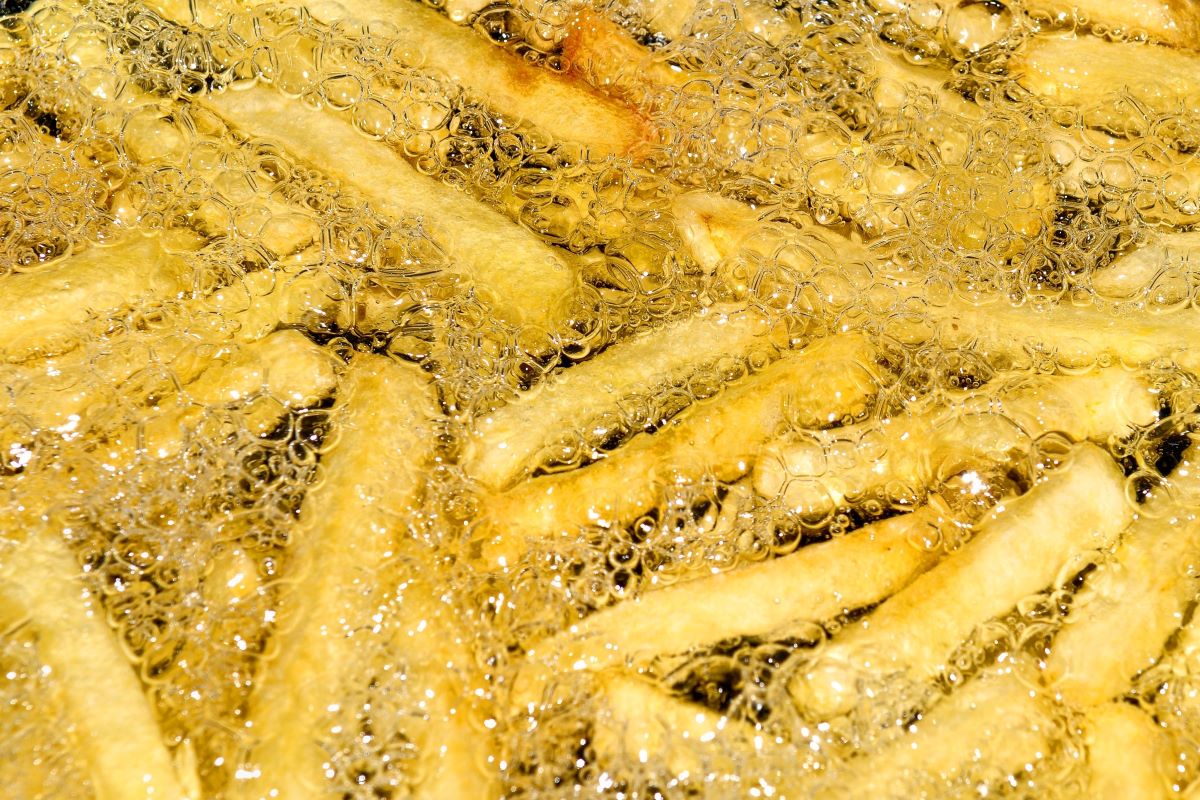Deep-frying
Deep-frying is cooking in hot oil at temperatures beyond 100 C, the boiling temperature of water. Oil itself is not a good conductor of heat. However, the high temperatures cause browning reactions (mostly Maillard reactions) at the surface. This happens as soon as the food has dried out at the surface, which provides for a nice crispy taste. Some foods are protected with a batter (see Cooking Hints – bread, dough, batter) to keep them moist during deep frying. But others are deep fried as is. Temperature control is important. Low temperatures get the fried material to absorb too much oil and high temperatures darken the food too quickly.
Geographical differences
In the West people use electrical deep fryers that control temperature automatically. In Asia often they use a wok for deep-frying. They deep-fry small amounts of food in batches in order to keep the oil temperature as much as possible constant. The Asian home cook and street-side operators have a keen eye for oil temperature. They look for smoke coming from the oil surface to judge temperatures. Or they splash-in a few drops of water and judge by the sound of the wok if the oil temperature is high enough. Alternatively, a few drops of batter can be used. The drops should not sink to the bottom, but reach quickly the surface, where they can be skimmed off before starting.
Deep-frying oils
The oil requires some attention. Three main considerations: 1. The oil should be relatively low in poly-unsaturated oils. These are easily oxidized at higher temperatures and will go rancid rather quickly. This poses some health safety issues (see Eating and Health section under Knowledge). 2. The second consideration is the smoking point of the oil, which is usually reduced by ‘impurities’ in the oil. Do not use virgin olive oil for deep-frying, but use refined oils. And finally 3. Cost. Oil that needs to be replaced too often and is expensive per liter is not the best choice for deep-frying.
Best oils for deep frying are tallow (beef fat), palm oil or palm kernel oil, refined canola or rapeseed oil or refined peanut oil (which does not have a particular peanut taste anymore). Safflower oil is a good choice if you can have access to affordable priced material.
To make the final cooking time shorter, par frying is sometimes used. Here the food is first fried in oil at lower oil temperatures to cook it but not brown it. This food can be drained, cooled or frozen and easily stored and transported.
The disadvantages of deep-fried foods are that foods may contain more fat. However par-frying may help to reduce this. Further in asparagine containing foods (such as white potatoes) carcinogenic acrylamide may be formed in traces at the surface. This depends on many actual frying and preparation conditions. Simply said: enjoy deep fried foods, but do not only eat deep fried foods!



